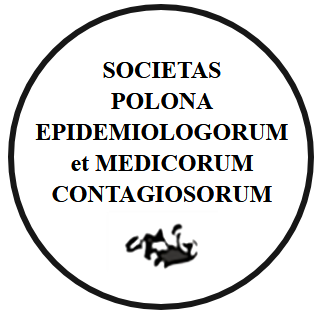ABSTRACT
INTRODUCTION. Staphylococcus aureus is a microorganism, which is able to colonize the human body without any pathogenic effect, but it also can cause life-threatening infections (opportunistic pathogen). Asymptomatic colonization with both methicillin resistant (MRSA) and methicillin susceptible (MSSA) S.aureus strains state is an important predisposing factor for infections. The risk of infection for carriers of MSSA is even three-times higher than for non-colonized people, and in the case of MRSA it is even four-times higher than in MSSA carriers. Carriers can be also a source of infection for other people, especially those belonging to high-risk groups. The drug of choice used for the local eradication of S.aureus is mupirocin (Mup). In recent years, the failure of decolonization therapy has been observed. The aim of the study was to assess and compare the level of colonization of S.aureus (MRSA or MSSA) among medical students and to evaluate the sensitivity of the strains to mupirocin. For MRSA/MupRSA isolates the molecular mechanism of resistance phenotype was determined.
MATERIALS AND METHODS. 955 swabs from 2014-2016 from pre-clinical students of medicine of the Medical University of Warsaw. The strains were identified using Pastorex-Staph-Plus (BioRad) and/or the VITEK-MS system (Biomerieux), according to manufacturer’s instructions. Susceptibility to methicillin and mupirocin was determined by disk diffusion and/or broth microdilution method, according to EUCAST. The presence of the mecA/mecC and mupA genes were detected with PCR technique.
RESULTS. Asymptomatic colonization with S.aureus strains was found in 245/955 (25,7%) students, in particular years in the range of 21,7-29,9%. 243 isolates expressed the MSSA/MupSSA phenotype, one strain was resistant to mupirocin MSSA/MupRSA (genotype mecA/mecC-negative, mupA-positive) and one showed simultaneous resistance to methicillin and mupirocin (mecA/mupA-positive genotype). The level of MRSA and MupRSA colonization was 0,1% and 0,2%, respectively.
SUMMARY AND CONCLUSIONS. The level of S.aureus colonization among surveyed students, didn’t differ from the norm for a generally healthy population, but showed an upward trend. The carriage of S.aureus, especially of multi-resistant strains among medical students at the beginning of their clinical activities, consist of a real threat to patients and other people.
STRESZCZENIE
WPROWADZENIE. Staphylococcus aureus jest drobnoustrojem, który może bezobjawowo kolonizować człowieka, ale może również wywoływać zagrażające życiu zakażenia (patogen oportunistyczny). Bezobjawowa kolonizacja zarówno wariantami meticylino-opornymi (MRSA), jak i wrażliwymi (MSSA) stanowi istotny czynnik predysponujący do zakażeń. Ryzyko infekcji u nosicieli MSSA jest nawet trzykrotnie wyższe w porównaniu do osób nieskolonizowanych, a w przypadku MRSA nawet czterokrotnie wyższe w porównaniu do nosicieli MSSA. Nosiciele mogą stanowić źródło zakażenia dla innych osób, zwłaszcza należących do grup podwyższonego ryzyka. Lekiem z wyboru stosowanym do miejscowej eradykacji S.aureus jest mupirocyna (Mup). W ostatnich latach coraz częściej obserwuje się niepowodzenia terapii dekolonizacyjnej. Celem badań była ocena oraz porównanie poziomu kolonizacji S.aureus (MSSA lub MRSA) wśród studentów medycyny oraz ocena wrażliwości wyizolowanych szczepów na mupirocynę. Dla MRSA/MupRSA określono mechanizm molekularny determinujący fenotyp oporności.
MATERIAŁY I METODY. 955 wymazów z lat 2014-2016 od studentów przedklinicznych kierunku lekarskiego WUM. Szczepy identyfikowano przy użyciu Pastorex-Staph-Plus (BioRad) i/lub systemu VITEK-MS (Biomerieux), zgodnie z instrukcją producenta. Wrażliwość na meticylinę oraz mupirocynę określano metodą dyfuzyjno-krążkową i/lub mikro-rozcieńczeń w podłożu płynnym, wg EUCAST. Geny mecA/mecC oraz mupA wykrywano przy użyciu techniki PCR.
WYNIKI. Bezobjawową kolonizację szczepami S.aureus stwierdzono u 245/955 (25,7%) osób, w poszczególnych latach w zakresie 21,7-29,9%. 243 izolaty wykazywały fenotyp MSSA/MupSSA, jeden szczep wykazywał oporność na mupirocynę MSSA/MupRSA (genotyp mecA/mecC-negatywny, mupA-pozytywny) i jeden wykazywał jednoczesną oporność na meticylinę oraz mupirocynę (genotyp mecA/mupA-pozytywny). Poziom kolonizacji MRSA oraz MupRSA wynosił odpowiednio 0,1% oraz 0,2%.
PODSUMOWANIE I WNIOSKI. Poziom kolonizacji S.aureus wśród badanych studentów nie odbiegał od normy dla populacji ogólnie zdrowej, ale wykazywał tendencję wzrostową. Nosicielstwo S.aureus, a zwłaszcza wieloleko-opornych szczepów wśród studentów medycyny rozpoczynających zajęcia kliniczne, jest realnym zagrożeniem dla pacjentów oraz innych osób z kontaktu.
You can change cookies settings in your browser. Restricted use of cookies in the browser configuration may affect some functionalities of the website.





